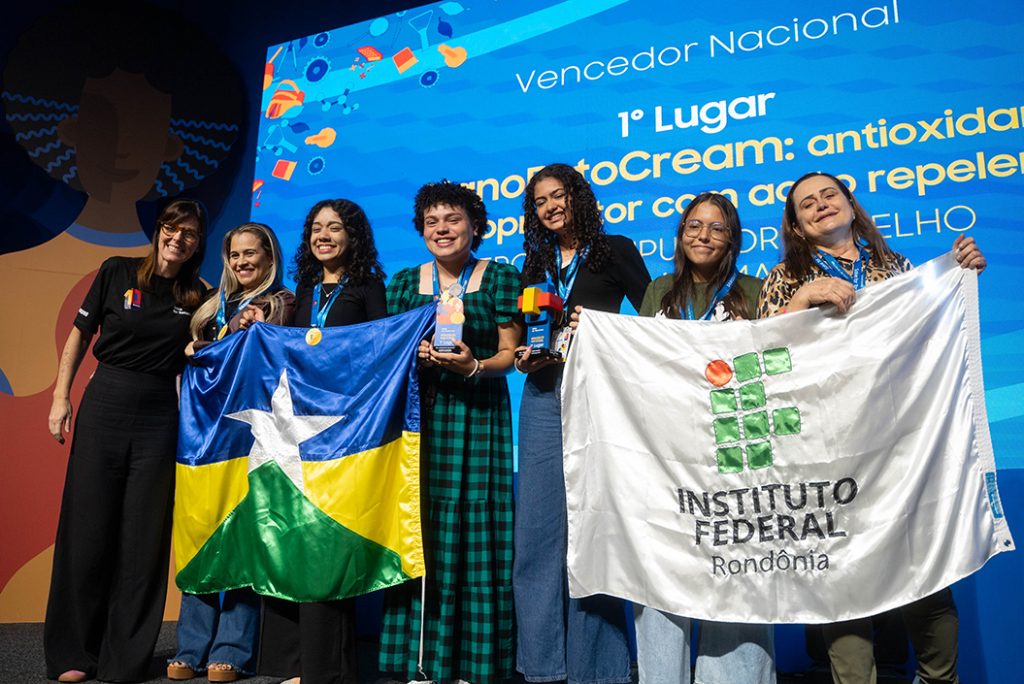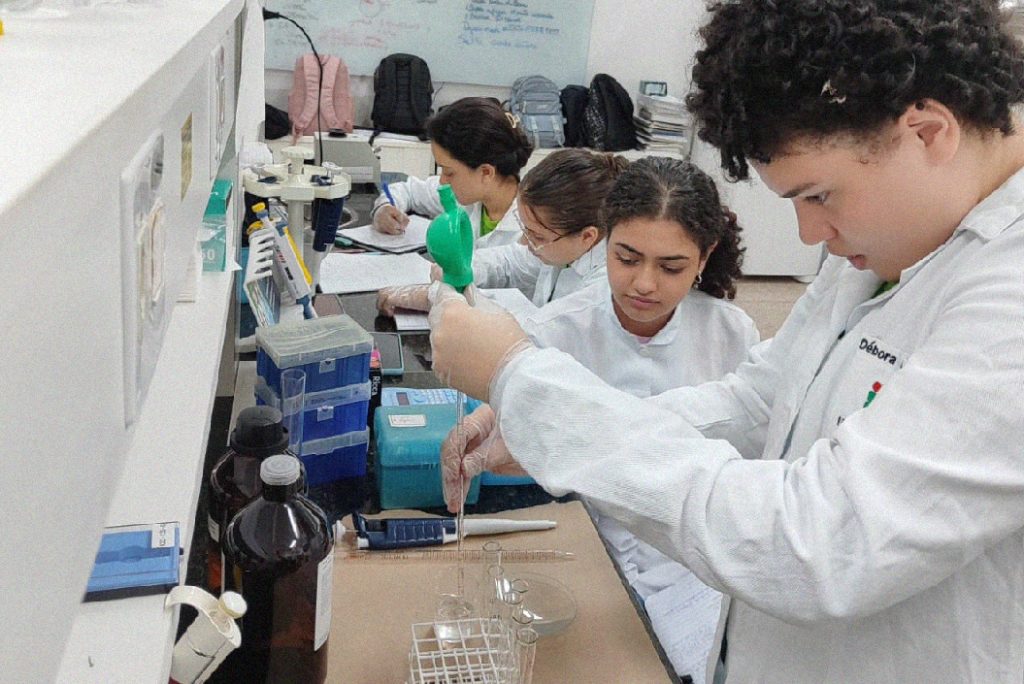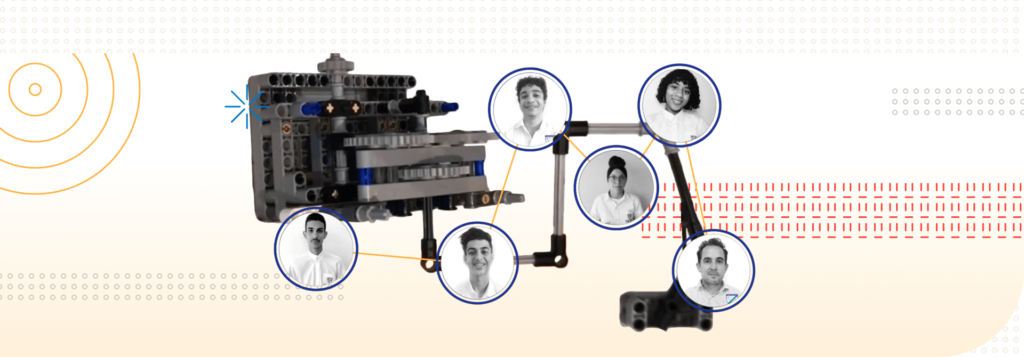Harnessing the pharmaceutical and medicinal properties of natural resources is a growing trend to promote sustainability around the world. In the Amazon region, home to the greatest biodiversity on the planet, it could not be different. From the union of a resin and a shrub plant, emerged Nanofotocream; a multifunctional cream developed by a team of four students and two teachers from the Federal Institute of Rondônia (IFRO). The project won the 10th edition of Solve for Tomorrow Brazil and it proposes an innovative natural cosmetic with low production costs.
The product is based on crajiru extract, a medicinal shrub plant and rosin oil, a natural resin. Both are known for their anti-inflammatory function and can be easily found in the state of Rondônia. Based on a series of chemical tests, the group managed to develop a cream capable of protecting the skin from sunlight, preventing diseases such as skin cancer, premature aging caused by free radicals, and also acting as a repellent tropical against disease-carrying insects.
The team members are in the 1st year of high school (third to last year of compulsory schooling), are 15 years old, and are students of the technical vocational course in Chemistry. In Brazil, each state has a Federal Institute, where students can complete secondary education (the last three years of compulsory schooling) alongside technical training. In this way, the student has the subjects from the traditional high school curriculum and those specific to the chosen technical course.
According to Minelly Azevedo, one of the responsible educators for the project, it all started in a subject in the first semester of the course, which teaches the fundamentals of chemical experimentation. “As soon as the course begins, the class needs to start thinking about developing products or providing services. And here in the Amazon, we have several social problems, including public health. Discussing these topics, one of the students raised the issue of photoprotection”, recalls the teacher.

We saw that making sunscreen was something possible and important for our region. Therefore, we began to do a bibliographic survey and to observe the products available on the market for better understanding of the advantages and disadvantages of this project, explains Azevedo.
One detail that caught the team’s attention was realizing that the majority of sunscreens on sale highlighted the antioxidant function. “So we reflected on what it meant to be an antioxidant and how we could include this property in our cream. Then, a student suggested that the product could also be a repellent. Why not combine all these ideas?”, the teacher says.
Science for the Bioeconomy
In parallel with the decision on the adopted technique, the group decided on the necessary inputs. Tests were conducted with several plants, but some candidates were eliminated because they did not have a pleasant smell or color. Finally, crajiru was chosen, which is already commonly used in phytotherapy (treatment that uses plants or plant derivatives as medicines) for cases of anemia and ulcers. Additionally, we chose rosin oil, which is used as a healing, expectorant, and antimicrobial. “We are committed to investigate the fruits of our biodiversity and stimulate the local bioeconomy”, she emphasizes.
Another aspect taken into consideration was ensuring that the components used in the formula did not generate water or soil contamination. “It could neither be harmful to people’s skin nor generate polluting waste. That’s why we work with biodegradable synthetic polymers”, she informs.
Experimentation from an early age
Every year, IFRO teachers make a voluntary call for students who want to develop extracurricular scientific initiation projects. “For this type of project, we usually work with students from the 2nd year onwards, who already have a base of knowledge. We never imagined that 1st-year students could progress so much with this product”, reveals Azevedo.
She says it was a gamble to form this group at such an early age, but it was also a pleasant surprise to see the maturity of the teenagers. “It left a lesson for us that experimentation can come from the beginning, taking advantage of the energy and desire to participate in this younger group”, she points out.

For Azevedo, Solve for Tomorrow’s mentoring was crucial in this process. “Our mentor was able to access these young women at all times, exchanging experiences and motivating them. It was incredible. And we, as educators, learned a lot”, she highlights.
Part of the success is also due to family involvement: “Parental support was very important, encouraging the students and understanding that they sometimes needed to stay at school longer”, she reinforces.
With the positive results, the idea now is to continue the project in the next academic years, conducting more elaborate tests, so that the prototyping is fully completed at the end of high school. The brand “Nanofotocream” has already been registered and the goal is to formalize the patent at the end of the three years of study.




